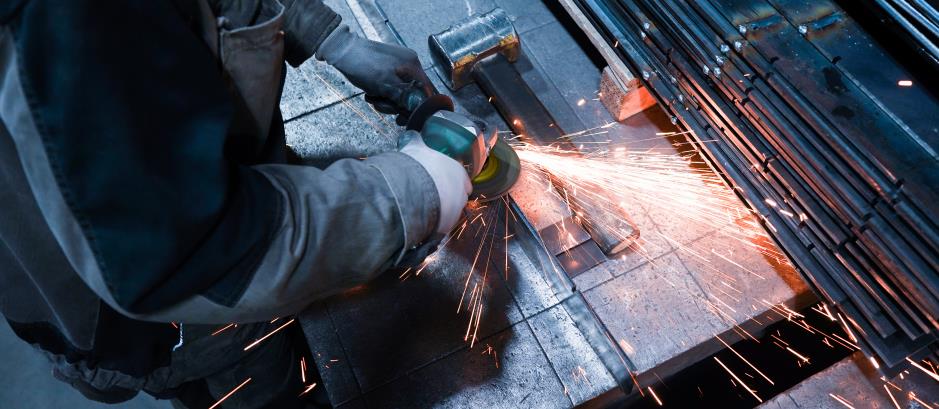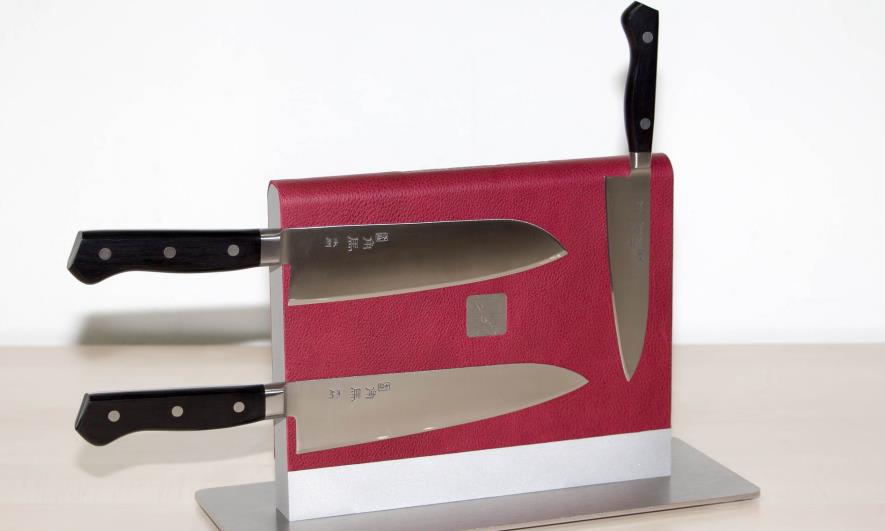The search for a perfect steel alloy is an everlasting endeavor among manufacturers, engineers, and metallurgists. In the case of 1095 steel, this alloy offers an outstanding combination of high carbon content and simple heat treatment. Considered “high carbon,” this alloy is often used for parts that require excellent resistance, such as kitchen knives and saw blades.
1095 steel is a high carbon steel with 0.95% carbon content. It contains other trace elements such as manganese, phosphorus, and sulfur. The combination of high carbon content and other alloying elements gives the 1095 steel better properties such as wear resistance, edge retention, and hardness.
While other alloys may boast superior hardness or corrosion resistance, 1095 offers a good balance of both. This article will further explore the composition, properties, and care of 1095 steel.
Table of contents
What is 1095 steel?
The reference “1095” is a figurative description of the steel’s practicality and chemical composition. The term “95” refers to the steel’s carbon content of 0.95%. Essentially high carbon steel are those alloys with a carbon content ranging between 0.60% to 1.4% by weight.
1095 is part of a family of the 10XX series of steel. The “XX” refers to the carbon content of the alloy. The 1 and 0 represent the two main elements used to compose the steel’s content. In the case of 1095, “1” represents carbon, and since there’s no other major element, “0” is used as a placeholder. The final two digits represent the carbon content in 10ths of a percent. So, 1095 has a carbon content of 0.95%.
1095 steel composition

1095 steel is a simple alloy with only four components other than iron. Other trace elements may be present in some alloys, but they do not significantly affect the overall composition. The right balance of elements is crucial to the performance of an alloy.
- 0.95% carbon: The high carbon content is the primary element in this alloy. The extra carbon gives the alloy excellent wear resistance and edge retention, making it less ductile than other steels.
- 0.50% manganese: Manganese is responsible for increasing the brittleness and hardness of the steel. In addition, it helps to prevent decarburization during heat treatment.
- 0.03% phosphorus: The amount of phosphorus can range between 0.03% to 0.04%. The role of phosphorus is to improve machinability and resistance to corrosion.
- 0.05% sulfur: Sulfur works with manganese to improve machinability. It forms inclusions of manganese sulfides that act as barriers to further deformation.
- 98% iron: Iron is the main element in 1095 steel. It makes up the bulk of the alloy by weight.
How is 1095 steel as a knife material?
1095 is an ideal steel for creating knives. The high carbon content makes the alloy desirable for making sharp blade edges However, chefs also consider the steel brittle. As a result, 1095 steel is often used for knives that aren’t too thin or delicate.
Below is how 1095 carbon steel fairs in property tests
Hardness
Manufacturers use the Rockwell scale to measure the hardness of steel. The higher the number, the harder the steel. 1095 has a 55–58 HRC on the Rockwell C scale. This value is a smidge over the soft side of medium, making it an ideal knife steel.
The hardness is due to the high carbon content in the alloy, which makes the steel less ductile. The lack of ductility means it can be challenging to work with 1095. Forging the steel is possible, but it requires a lot of effort.
Corrosion resistance
Although the phosphorus in 1095 helps to improve corrosion resistance, the steel isn’t stainless. It lacks chromium, which is the element that gives stainless steel its corrosion-resistant properties.
As a result, 1095 is susceptible to rust and other forms of corrosion. Chefs can reduce the corrosion rate with proper storing methods.
Edge retention
Perhaps the most significant advantage of 1095 is its edge retention. The steel can hold a sharp edge for a long time, so you won’t need to sharpen it as often as other knives. The simple heat treatment further improves this property, making 1095 an ideal choice for knives that see a lot of use.
Wear resistance
The hardenability of 1095 makes it resistant to wear and tear. Although the wear resistance isn’t as great as other high carbon alloys, it’s still quite good. The steel can withstand a lot of abuse before it shows signs of wear.
Toughness
The brittleness of 1095 makes it less tough than other steels. However, it’s still tough enough for most applications. Raising the hardness to 58 HRC will see a significant drop in toughness. The steel can become too brittle and may even shatter under impact.
Ease of sharpening
1095 is a hard steel that can be challenging to sharpen. However, it’s not the hardest steel on the market, so it’s still possible to get a sharp edge with the right knife sharpening techniques and tools.
1095 steel vs. other 10xx series steel
1095 is part of the 10xx series of carbon steels. Other alloys with almost similar properties in this series include 1075 and 1084. The main difference between these alloys is the carbon content.
Below is how these steels compare in properties.
1095 vs. 1075
1075 has lower carbon content than 1095. As a result, it’s not as hard as 1095. The difference in hardness is only marginal, but it can impact edge retention and toughness. 1095 has better edge retention but is less tough. Ease of sharpening favors 1075.
1095 vs. 1084
Most people consider 1084 an equivalent to 1095. The two steel have almost similar properties. The main difference is that 1084 has slightly less carbon. As a result, it’s not as hard as 1095 but is tougher. 1084 has better edge retention, but again, the difference is only marginal.
How to care for 1095 steel knives

Carbon steel knife care ensures knives made of this particular alloy remain pristine. 1095 is a high-carbon steel and, as such, is particularly susceptible to rust and corrosion. The lack of chromium in the alloy makes it even more vulnerable to these issues.
As a result, users must take extra care when cleaning and storing 1095 knives. The following tips will help you keep your 1095 knife in good condition.
How to care for high carbon steel knives
High carbon steel knives such as the Serbian chef knife require special care to prevent damage.
- Use a mild soap and warm water to clean the knife after each use. Avoid using harsh detergents or chemicals, as they can damage the steel.
- Dry the knife immediately after cleaning to prevent water spots from forming. The best way to dry a knife is to use a soft, clean cloth.
- Avoid using the knife like a cleaver. The high carbon steel is tough but can chip if misused.
- Use wooden cutting boards instead of glass or ceramic because harder surfaces can damage the blade over time. The best wood for a cutting board is one that doesn’t absorb moisture, such as maple or cherry.
Sharpening, storing, maintenance
1095 is a high carbon steel and, as such, is particularly susceptible to rust and corrosion.
- You can prevent rust by regularly oiling the blade with food-safe oil. Oiling creates a barrier between the steel and the air, which will prevent oxygen and moisture from coming into contact with the metal.
- Sharpening 1095 steel can be difficult because it’s hard steel. However, using a sharpening stone can help you get a sharp edge. Avoid using a power sharpener, as it can damage the blade.
- When not in use, store the knife in a dry place. A wooden knife block is a good option because it will allow the knife to breathe. Other knife storage solutions, such as a drawer with a cloth lining, can also work.
- Do not use a dishwasher to clean your knife. The high temperatures and harsh chemicals can damage the steel.
- Avoid heating the knife directly over an open flame, as this can ruin the temper of the steel. In general, it’s best to avoid exposed heat sources with all knives.
1095 steel (FAQs)
Why is 1095 steel so popular?
1095 is popular because it’s a simple alloy that is easy to produce. It doesn’t have any fancy alloys or special properties. However, it’s still high-quality steel that makes good knives. Its hardness and edge retention capabilities make it a good choice for many applications.
Is 1095 a high carbon?
1095 is a high carbon steel. High carbon steel contains 0.60% to 1.0% carbon. 1095 contains 0.95% carbon, so we categorize it under high carbon steel. If it contains less than 0.60% carbon, then it’s low-carbon steel, and if it contains more than 1.0% carbon, it’s ultra high-carbon steel.
Closing
1095 is a high-carbon steel often used to make knives. The chemical composition of 1095 steel is simple and easy to produce. However, it’s still high-quality steel that makes good knives. Its hardness and edge retention capabilities make it a good choice for many applications. Caring for 1095 steel knives is important to prevent rust and corrosion. Store the knives in a dry place, and oil them regularly.
Visit our store for high-quality, high-carbon steel knives that will change how you cook.









